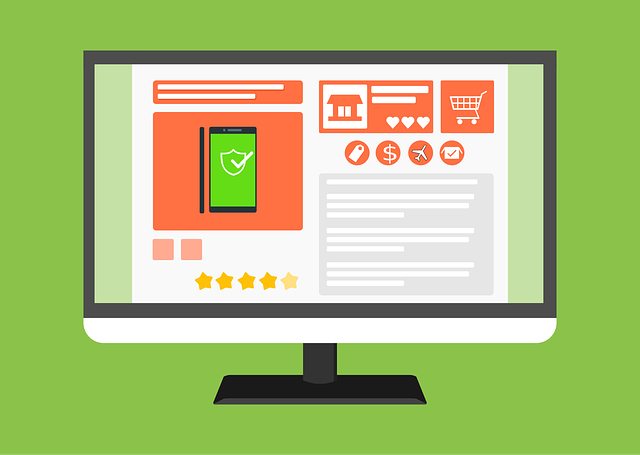Semaglutide Online Consultation: Revolutionizing Rural Healthcare Access

In remote regions with limited healthcare access, telemedicine and semaglutide online consultation r…….
In the evolving landscape of healthcare, the integration of technology and telemedicine has paved the way for innovative treatment approaches, particularly in chronic disease management. Semaglutide telehealth is a groundbreaking concept that combines semaglutide, a medication widely used for type 2 diabetes, with remote patient monitoring and digital health solutions. This article aims to provide an extensive overview of semaglutide telehealth, exploring its definition, global impact, economic implications, technological advancements, regulatory environment, challenges, case studies, and future prospects. By delving into these aspects, we will uncover the transformative potential of this digital healthcare approach in managing diabetes and improving patient outcomes worldwide.
Semaglutide telehealth is a comprehensive care model designed to optimize the management of type 2 diabetes mellitus through a blend of pharmacotherapy, remote monitoring, and digital health interventions. It leverages the power of semaglutide, a glucagon-like peptide-1 (GLP-1) receptor agonist, which has demonstrated efficacy in lowering blood glucose levels and promoting weight loss. The telehealth component involves using technology to connect patients with healthcare providers, enabling remote consultations, medication adjustments, and continuous glucose monitoring.
Historically, the concept emerged as a response to the growing demand for accessible and efficient diabetes care, especially in rural or underserved areas where in-person visits might be limited. By integrating semaglutide therapy with telemedicine, this approach aims to streamline patient management, improve adherence to treatment plans, and enhance overall glycemic control. The key components include:
The impact of semaglutide telehealth is not limited to a single region; it has garnered global attention and adoption due to its potential to improve diabetes care accessibility and outcomes. Several key trends shape its international trajectory:
The economic landscape of semaglutide telehealth is multifaceted, encompassing market dynamics, investment trends, and the broader impact on healthcare systems.
The success of semaglutide telehealth relies heavily on technological innovations that enable effective remote monitoring and communication. Several key technologies are shaping diabetes care:
The regulatory landscape for semaglutide telehealth is evolving globally as governments strive to balance innovation with safety and efficacy standards.
While semaglutide telehealth holds immense potential, several challenges must be addressed for successful global implementation:
Several case studies highlight the effectiveness of semaglutide telehealth in improving diabetes management and patient outcomes.
Case Study 1: Rural Diabetes Management in Australia
A study in rural New South Wales, Australia, implemented a semaglutide telehealth program for patients with type 2 diabetes. The program included remote monitoring using CGMs and regular virtual consultations with endocrinologists. After 12 months, participants showed significant improvements in HbA1c levels (a marker of long-term blood glucose control) compared to a control group. The program also reduced the need for in-person clinic visits, increasing patient satisfaction.
Case Study 2: Value-Based Care in Germany
A value-based care model in Germany integrated semaglutide telehealth into primary care settings. Patients with poorly controlled type 2 diabetes were enrolled in the program. After 6 months, the average HbA1c level decreased by 1.5%, and the number of hospital admissions for diabetes complications decreased by 30%. The program demonstrated improved health outcomes while reducing healthcare costs.
Case Study 3: Teen Diabetes Self-Management in the US
A study in the US focused on adolescents with type 1 diabetes using a semaglutide telehealth program. The program combined CGMs, educational resources, and regular virtual check-ins with endocrinologists and certified diabetes caregivers. Participants reported improved self-management skills and reduced anxiety about their condition. HbA1c levels also improved, indicating better long-term blood glucose control.
The future of semaglutide telehealth looks promising as technology advances and healthcare systems evolve to embrace digital solutions. Potential areas of growth include:
In conclusion, semaglutide telehealth represents a significant advancement in diabetes management, leveraging technology to improve patient outcomes, reduce costs, and increase access to care. Overcoming challenges and addressing regulatory considerations will be crucial for its widespread adoption. As digital health solutions continue to evolve, semaglutide telehealth is poised to play a pivotal role in shaping the future of diabetes care globally.

In remote regions with limited healthcare access, telemedicine and semaglutide online consultation r…….

Semaglutide online consultation platforms revolutionize chronic condition management, especially for…….

As semaglutide online consultation becomes prevalent in telehealth, prioritizing patient privacy and…….

Semaglutide online consultations leverage digital health solutions for remote medical care. Video co…….

Semaglutide online consultations revolutionize healthcare access and management by enabling virtual…….

Semaglutide online consultation revolutionizes diabetes management by offering remote access to heal…….

Semaglutide online consultations empower patients with type 2 diabetes to access specialized care re…….

The integration of technology in healthcare has led to a groundbreaking solution: semaglutide online…….

Digital healthcare technologies, especially semaglutide online consultations, revolutionize patient…….

Semaglutide online consultations transform diabetes management by offering virtual access to expert…….